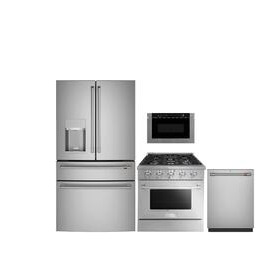How to choose your pellet stove

Consumption, prices, and technical data appear on the device label and room characteristics.
On the market are various pellet-fed versions with varying looks and technologies. Regarding the second aspect, it is necessary to verify the basic requirements for installing the pellet stove, such as the ability to place the chimney and an air intake, that an air hole must be connected to the outside of the house, and the presence of an electrical outlet to start up and function.
First, choose air or water (hydro). This allows for residential hot water and radiators. Following the duct arrangement, the air furnace can heat most rooms. About 30% of the heat generated by the stove stays in the room, so a greater wattage might make it uninhabitable.
The pellet stove documentation must include:
- The CE mark.
- The legislation under which the product was tested.
- The pellet stove's power.
- Its performance in percentage.
- Its CO2 emission value (the lower the value, the less it pollutes).
- The manufacturer's name.
The manufacturer must be able to guarantee a technical assistance network throughout the country for annual maintenance.
Fuel economy? Sediment is 4.6 kWh/kg. A 9 kW pellet burner with an 87 percent efficiency at full power burns 2.25 kg per hour and 600 grams at idle. Compared to natural gas, U.S. heating costs average $70 to $90 per MWh.
It's stove time. Buying tips

Here are some pellet stove buying suggestions from industry leaders.
What's better than a pellet stove when fall arrives? We look at some of the industry's most reputable firms to learn about stove buying.
Pellet stove or wood stove?
Firewood or pellets? The pellet's simplicity of use is one of its most essential qualities; pick a stove with self-cleaning mechanisms to prevent residues.
For pellets, "favour a product with a high calorific value, low ash content (the ideal product includes 0.7% ash) and humidity, created by experienced enterprises."
Wood fires are charming, but pellets provide even better savings. The latter features autonomy (turning on and off at predetermined intervals) and charging convenience.
The right pellet stove: selection criteria

The choice of a stove, wood or pellet, depends on the fuel available in the private sector, on habit, and necessity (the autonomy, the need for automation).
Existing equipment is another plus. Heating appliance performance is critical. In pellet stoves, performance may reach more than 90%, and wood and pellets offer natural heating: their CO2 emissions are equivalent to those absorbed by plants. Modern pellet stoves minimise the quantity of dust released, particularly compared to previous ones, substantially and rapidly, owing to innovative technology.
Safety first
Among the selection criteria we recommend emphasising safety. This should be the first criterion when deciding on the purchase, from the choice of a stove, which should be advised by a qualified person who can consider all aspects of the house where it will be placed (size, energy certification, etc.), to the proper installation, maintenance, programming, and what is done for boilers with natural gas or other fuel.










